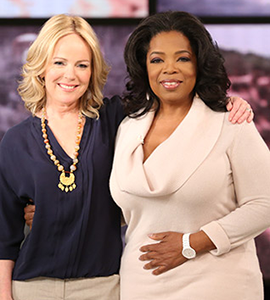On Taking Risks
As I write this I’m somewhere between LA and New York, sitting next to my sleeping husband. It is the first time — I am tempting fate by admitting this — that we have ever taken the same flight together, without our son. We’ve each taken countless flights solo. And we’ve flown together as a family (the crazy thinking being that if we go down, at least we’re all together). We’ve even boarded two separate flights to the same destination, reuniting at the airport in some far-flung place. But never have we sat together, scrunched into our seats, the two of us high above the planet as somewhere below us, our thirteen year old is watching a football game. As risks go, I have grown more pragmatic over the years. Statistically speaking, we’re in better shape than if we were driving, or even taking a walk down a country road. Risk and the calculations, rumination, and determinations surrounding it — whether avoiding it or embracing it — has been a tape looping through my head for so long that I don’t know who I would be if I weren’t thinking about it. I am a mama bear, a wife, a friend, a niece, a teacher, and I am always thinking of how to keep myself and those I love safe from any imaginable harm.
But when it comes to the writing life, risk is what it’s all about. Lately, I’ve been reading a lot of books that play it safe. Conventional narratives, characters whose edges are smoothed out to a palatable degree. Can I just say it? These books bore me. I’m bored. It’s like eating muesli when I want a charred, juicy steak. I want to read about messiness. I don’t need the pieces to fit together in fiction — I mean, when do the pieces ever fit together in life? I want to encounter characters who feel, who do the unexpected. Who think human thoughts — no matter how dark and flawed and uncomfortable. I want to be reminded of my own inner landscape, my own complex humanity. I want to connect — with the book, with myself. In a recent re-reading of Mrs. Dalloway, I was amazed, as I always am, by the way that Woolf renders Clarissa Dalloway almost see-through, as if we were watching an MRI of her internal life, all the while that she is going about her daily business ––the inner and outer equally accessible. I felt this thrill of discovery too, when reading Jess Walter’s Beautiful Ruins, a novel in which the author took risk after creative risk but somehow never lost control of his taut narrative, his story. Walter writes like no one has ever said no to him. No. He writes like he has learned not to say no to himself.
If we are to write work that is alive, we have to be willing to head out there on that high wire. Every day, we have to place one foot, then another, on that thin, quivering line and let go of our ruminations and questions about what might happen. Maybe it won’t work. Yeah. Maybe it will suck. Maybe I’ll waste my time and precious energy on a piece of prose that will be dead on arrival. And indeed, yes you may. But how else are we supposed to discover what’s in there — in the teeming, writhing darkness? In the frozen tundra? If we’re sitting alone in our rooms, engaged in this solitary life — a life filled with uncertainty, with constant self-doubt, oh, yes, and with risks of a very practical sort — no one gives us a pension and a retirement plan, after all — then we damned well better be sure that we’re spending it all, shooting it all, holding back nothing. We need to give it up to the page, not just when it feels good, not when we feel in control of it, but every single time.


















